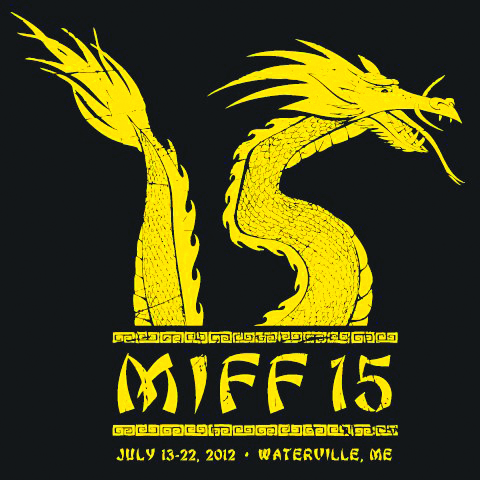“Get ready, little lady. Hell is coming to breakfast.” — The Outlaw Josey Wales
Italians love opera. The Italians own opera.
They gave the world the greatest operas ever written. Add to Puccini and Verdi the name of Sergio Leone, the son of Italy who grew up obsessed with American cowboy movies, and went on to make one of the longest, bloodiest, operatic westerns, which, many argue, is the best cowboy movie ever made.
It isn’t. “Jeremiah Johnson” and “The Searchers” hold that cup. But here it is, ready or not, “Once Upon a Time in the West,” a six gun-sagebrush opera now playing at — where else? — the Waterville Opera House.
Leone is best known for his Clint Eastwood trilogy spaghetti westerns, but that’s another chapter.
Here we deal with a film that allegedly influenced an album of American filmmakers: Scorsese, Tarantino, Lucas, Coppola, John Milius and scores of others. Leone himself was clearly influenced by the work of the great John Ford. Well, who wasn’t? There has never been a gun drawn, horse ridden, beer hall wrecked or a damsel saved from distress that wasn’t influenced by Ford.
In this great film, we are faced with a legend, a monument, myth and magical rendition of a fabled past, the great American western, the black hats and the white hats. Welcome to “Once Upon a Time in the West.”
If there were time and space, I could tell you the legend of Leone and what it took to make this epic film. There is not, so I can only say this. One comes to a Leone film with patience or not at all. The opening sequence takes about 10 minutes with barely a word spoken, only the sound of a windmill and assorted flies.
“Once” is the story, in part, of a beautiful woman, Jill, from New Orleans (Claudia Cardinale), a former lady of the evening who arrives in a three-building Western town to take up a life with her new husband, a wealthy Irishman gold miner who got lucky and bought half of a desert, to build his dream town and make her a queen.
But long before she gets there a lot of badness rains down on the McCain homestead. People die, slowly from thirst, quickly from bullets. Keep in mind, Leone is not fond of doing anything quickly and, be prepared — he loves closeups. No director comes to mind that loves extreme closeups more than Sergio, and he loves blue eyes.
There will be violence, bloodshed and torture, but the road to these moments seem endless. Leone’s contemporaries are fond of saying that he is more concerned with the process leading up to the violence than the violence itself. Agreed.
“Once” is a tapestry of great color, music, and incredible sound — ancient train whistles, cicadas, wind, the whispers of lovers and moans of the dying. It has amazing actors, most of whom, I’m sorry to say, are dead now. Henry Fonda is the real star as “Frank,” the villain. “Villain” is a soft word for Frank. Prepare yourself for a new Fonda, one that had never been seen before nor since.
Among the Italian and Spanish extras who walk the dusty streets are Jason Robards as “Cheyenne,” a baddy gang leader with tender spots, Charles Bronson, Keenan Wynn and the great Lionel Stander. Hollywood historians love Stander. Google him.
Two great character actors from the past open the movie without a word: Woody Strode and Jack Elam. They have come to the railhead to greet and kill “Harmonica,” played by Bronson. Don’t count on it.
It’s safe to say that Tonino Delli Colli’s cinematography will be discussed in film classes until the end of time, as well as Leone’s magnificent excesses, most of which will blow what’s left of your mind after watching Fonda and Claudia make love, with a gun in the bed.
Ennio Morricone’s music, especially the iconic theme, is now considered a classic. It is haunting and evocative and was used again in Leone’s American gangster epic, “Once Upon a Time in America,” with Robert DeNiro. If you can find a copy of that one, you’re in for another masterpiece.
“Once Upon a Time” was shot in America, Italy and Spain. It’s hard to tell which locale we’re in at any given time, but all of the western landscape we grew up watching is there.
I have deliberately avoided going into rich detail on the multi-layered story, so as to enhance your appreciation of this classic. It unfolds like a Persian carpet, the kind that has all the surprises etched into the wool. I will guide you to pay attention to three scenes: the opening, the final flashbacks and the final gun duel between Fonda and Bronson that takes all of 10 minutes. They’re gorgeous.
“Once Upon a Time in the West” deserves its place in any film festival, and we should be honored to have it here. It is, in every sense, a big screen story.
Yes, Hell is coming to breakfast. Pull up a chair.
Send questions/comments to the editors.



Success. Please wait for the page to reload. If the page does not reload within 5 seconds, please refresh the page.
Enter your email and password to access comments.
Hi, to comment on stories you must . This profile is in addition to your subscription and website login.
Already have a commenting profile? .
Invalid username/password.
Please check your email to confirm and complete your registration.
Only subscribers are eligible to post comments. Please subscribe or login first for digital access. Here’s why.
Use the form below to reset your password. When you've submitted your account email, we will send an email with a reset code.